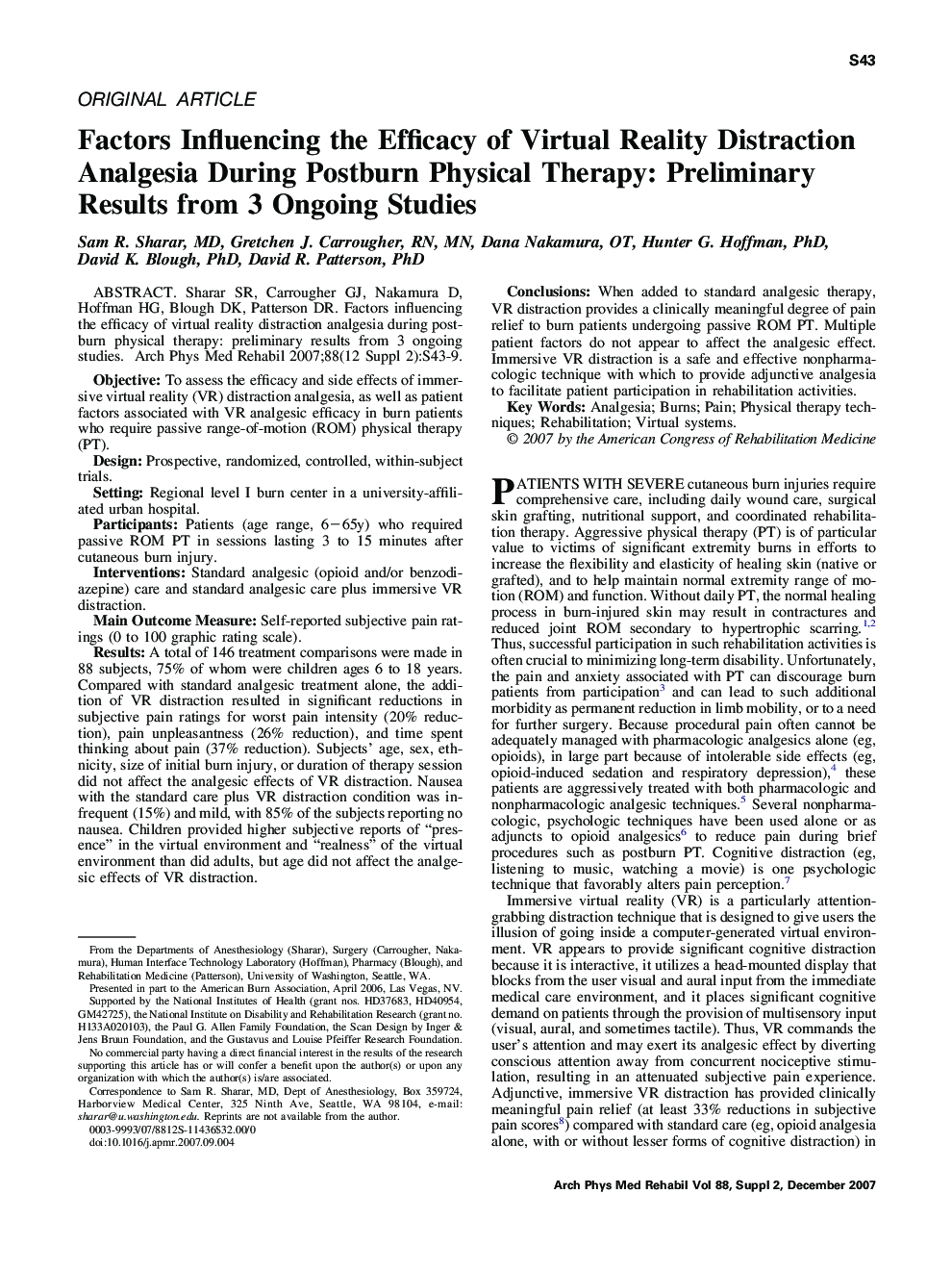| کد مقاله | کد نشریه | سال انتشار | مقاله انگلیسی | نسخه تمام متن |
|---|---|---|---|---|
| 3452615 | 1595786 | 2007 | 7 صفحه PDF | دانلود رایگان |

Sharar SR, Carrougher GJ, Nakamura D, Hoffman HG, Blough DK, Patterson DR. Factors influencing the efficacy of virtual reality distraction analgesia during postburn physical therapy: preliminary results from 3 ongoing studies.ObjectiveTo assess the efficacy and side effects of immersive virtual reality (VR) distraction analgesia, as well as patient factors associated with VR analgesic efficacy in burn patients who require passive range-of-motion (ROM) physical therapy (PT).DesignProspective, randomized, controlled, within-subject trials.SettingRegional level I burn center in a university-affiliated urban hospital.ParticipantsPatients (age range, 6−65y) who required passive ROM PT in sessions lasting 3 to 15 minutes after cutaneous burn injury.InterventionsStandard analgesic (opioid and/or benzodiazepine) care and standard analgesic care plus immersive VR distraction.Main Outcome MeasureSelf-reported subjective pain ratings (0 to 100 graphic rating scale).ResultsA total of 146 treatment comparisons were made in 88 subjects, 75% of whom were children ages 6 to 18 years. Compared with standard analgesic treatment alone, the addition of VR distraction resulted in significant reductions in subjective pain ratings for worst pain intensity (20% reduction), pain unpleasantness (26% reduction), and time spent thinking about pain (37% reduction). Subjects’ age, sex, ethnicity, size of initial burn injury, or duration of therapy session did not affect the analgesic effects of VR distraction. Nausea with the standard care plus VR distraction condition was infrequent (15%) and mild, with 85% of the subjects reporting no nausea. Children provided higher subjective reports of “presence” in the virtual environment and “realness” of the virtual environment than did adults, but age did not affect the analgesic effects of VR distraction.ConclusionsWhen added to standard analgesic therapy, VR distraction provides a clinically meaningful degree of pain relief to burn patients undergoing passive ROM PT. Multiple patient factors do not appear to affect the analgesic effect. Immersive VR distraction is a safe and effective nonpharmacologic technique with which to provide adjunctive analgesia to facilitate patient participation in rehabilitation activities.
Journal: Archives of Physical Medicine and Rehabilitation - Volume 88, Issue 12, Supplement 2, December 2007, Pages S43–S49